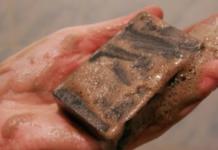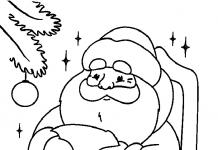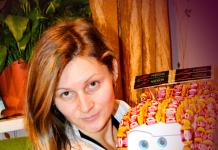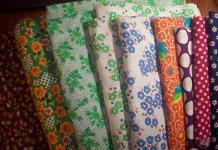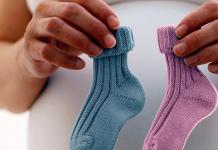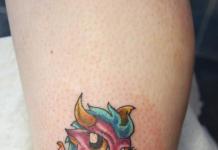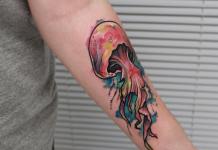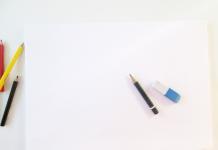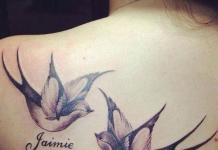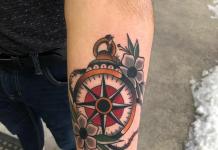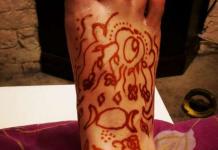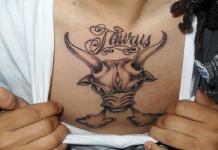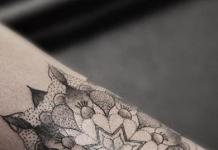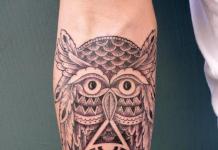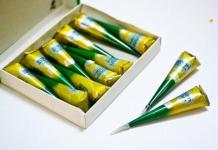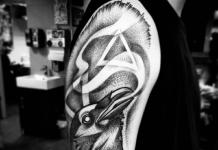When buying a tuned tattoo machine for work, take it as a basic rule - do not go into the settings of the device out of idle curiosity, do not twist anything unnecessarily, do not disassemble the machine yourself, having no idea about the device and setting - the machine is already completely ready for operation. In the event of a malfunction or breakdown, first of all try to contact the manufacturer, a normal machine builder will never refuse a full-scale consultation and any possible assistance.
Introduction
Immediately after buying a tattoo machine, stock up on a special lubricant, because for a trouble-free and long service life, the machine needs additional and uncomplicated care. It can be ordinary gun oil, which is sold in any hunting store. All steel parts of the tattoo machine are wiped with an oiled rag, about once or twice a month, this guarantees the absence of corrosion and rust. In addition to losing the appearance of the machine, corrosion is a serious danger to the springs, because. any microdamages on their surface, shells and cracks will quickly lead to failure. It is especially important to “oil” machines after using chemical disinfectant solutions containing aggressive components that cause corrosion.
Connection and operating voltage
Always use a polarized clip cord connection, this is required even by the highest quality polar capacitor, which controls the correct completion of the impact cycle and extinguishes the spark at the point of contact. Today, due to cheapness and distribution, polar capacitors are installed on almost all induction machines. In 99% of cases, the clip cord is connected as follows: plus to the rear pillar, minus to the frame (rear pillar), it’s not without reason that high-quality clip cords have bipolar “mustache” marked in different colors. Incorrect systematic connection of the clip to the machine leads to a deterioration in the performance of the tattoo machine and a reduction in the life of the capacitor, with the inevitable replacement of it as a result.
Operating voltage is a fundamentally important point, because. many people try to compensate for incorrect operation or design flaws of machines by simply raising the operating voltage on their power supplies, as a result, the voltage differs from the optimal one by 2 or more times. For a short time, this can help, but... new problems come out: the machines start to heat up faster and stronger, the spark at the contact point becomes like that of a welding machine - the contact screw quickly burns and wears off, the tattoo machine is still completely upset and simply cannot work Fine!
What should be the correct operating voltage? There is no single answer, because. everyone uses different machines, power supplies and connecting wires, but there are some guidelines that will work for most cases. Turn on the fully equipped machine and moisten the tip with paint or plain water (this is important, because the friction of a dry needle in the nozzle can affect the operating voltage), gradually increase the voltage on the PSU, holding the striker with your thumb - the blow should be accentuated sensitive, while visually, the striker will double or triple, the sound will remain clean and clear, in no case will it rattle or float in tonality. With high-quality wires, a power supply and the correct setting of the machine, the operating voltage will be in the range of 6-8 volts.
Heat
This is ordinary school physics - passing through matter, electrons transfer their energy to the body through which the current flows. The energy of the particles increases, the speed of their movement increases, the conductor heats up
. The more resistance renders the conductor (in our case, the magnetic circuit of the machine, its coils and frame, as well as connecting wires) to the passage of electric current, the more energy the electrons lose, the more the conductor heats up, since all the energy lost by the electrons turns into heat.
The heating process is an absolutely normal phenomenon for high-performance machines, but the devil, as always, lies in the details: the quality and cross section of the wire on the coils, in the material of the cores, the frame and even the screws for assembly, the cross section and materials of the connecting wires and, of course, the quality power supply! In the last article, we have already discussed in detail the issues of choosing equipment for tattoo artists.
If, subject to other conditions, the tattoo machine still heats up too much during long work, to burning discomfort in the hand - you just need to bend the front spring to the striker and unscrew the contact screw a little, and then re-adjust the machine (see operating voltage ).
Power loss
First of all, this applies to seals on the striker (nipples, grommets) and bandage elastic bands. For efficient operation of the induction machine, it is necessary to correctly assemble it before work. The importance of such a trifle as a sealant cannot be overestimated - regardless of the material and shape of the seals used, they must dampen backlash when transferring force from the striker to the needle bar, therefore the sealant should sit in the needle “like a glove”, i.e. to enter effortlessly, but also not to hang freely, otherwise there will be inevitable power losses.
I remind you that seals and bandages are disposable consumables and must be disposed of after each work (they may contain particles of suspension from blood and pigment), their properties deteriorate sharply over several hours of continuous operation and may adversely affect the operation of the tool - do not save on comfort and safety.
Contact screw
In the process of constant operation, various parts of the tattoo machine experience considerable loads and vibrations, friction and an electric spark arise between the contact screw and the front spring, which, over time, erase the contact screw and the front spring - the contact spot is lost, and the initial settings will definitely change and " float." For many tattoo artists, especially beginners, “loss of contact” drives them into a stupor and hopeless panic: “... everything is gone, boss, what to do, what to do?” (c)
Indeed, what to do in this case? Do you send the machine to a machine builder every time for tuning, often to another city or even another country, wasting time and customers, or learn how to tune the tool yourself?
The answer is obvious, especially since this kind of operation is simple and accessible even to a child: depending on the frequency of operation of the machine and the material of the contact screw, periodically, you just need to tighten the contact screw, leveling its worked part. You can determine the moment of adjusting the contact screw by the operating voltage: the more volts your device began to “eat”, the more necessary it is to adjust the ideal “contact spot”, i.e. screw in the screw. This must be done very carefully, always with the machine turned on: slightly loosen the locking screw on the contact screw post, and slowly screw in the contact screw, gradually, a quarter or half a turn, while listening to the sound of the running machine - it should be clean and clear, without "farting", sticking and failures.
Springs
Contact springs are cut out or cut out of a web-strip, from special hard and hardened steel, and only in the longitudinal direction. If the process of manufacturing and preparing the springs is not followed, microcracks may form along the edges, and if installed incorrectly (excessive or repeated bending), internal stresses of the metal can occur. When used on an ordinary tattoo machine, this may not manifest itself in any way, but when powerful tattoo machines are operated at high voltage, breakdowns are likely.
Thus, the breakage of springs is a fairly common problem: every tauist should be able to replace springs, especially when understanding the process, this is a matter of minutes!
Replacing the Front Spring - The first step is to inspect the parts of the broken spring, and note (or photograph) the angle of the fold and the distance to the striker. Take a new front spring and bend it slightly along its entire length with your fingers, evenly distributing forces, except for the part with a hole, then install the spring and turn on the machine, if the resulting bend is insufficient, then repeat the operation - remove and bend the spring again.
Replacing the rear spring - without removing from the tattoo machine, inspect the parts of the broken spring, measure (and mark with a marker) the distance from the striker to the seat of the machine. Usually, the rear springs are installed without bending, almost all modern machine builders design the machine saddle with a correctly set angle, this simplifies the installation of the rear spring and guarantees its long operation without breakage. If you still need a bend, do it in the same way as on the upper spring - orienting the bend up and towards the striker.
Act slowly and extremely carefully, the most common mistake is to bend the spring too much and try to bend it back, in this case you create additional internal stresses and the risk of the spring breaking in the near future is very high.
If the front spring has worked or burned (a recess has formed at the narrow, working end), the “contact patch” is also lost and the settings “fly off”, in this case, you can clean off the carbon deposits and level the tip of the spring with a needle file or sandpaper, remembering to polish the surface after the procedure - usually helps, in a particularly neglected situation - only replacing the "leaky" spring with a new one will help.
Working speed, duty cycle
The use of modern digital controllers with a developed display system makes life very easy, especially for beginners - a pro is always easier and faster to determine the operating mode of a tattoo machine “by eye”, “by ear” or “by finger”:
Most contouring machines run at 130-150Hz (DutyCycle 55-65%)
- Shaders for shadow work operate at 110-130Hz (DutyCycle45-55%)
- slow and powerful paints at 80-110Hz (DutyCycle 50-60%)
The above information is given when the tattoo machine is not charged, i.e. at idle, without a needle, when you assemble the car and turn it on, the frequency will definitely be lower:
For contour devices up to a frequency of 110-120 Hz
- for shadow shaders up to 75-85 Hz
- for powerful painters up to 60-75 Hz
However, the speed of the machine does not always linearly affect the speed of tattooing, even if we discard the most important component of the hands of a particular master, his experience and manner of work, the main thing here is the dynamics of the blow itself, so that with each penetration under the skin, the needle effectively brings the maximum amount of pigment there, with minimal injury to the skin - because of this, the quality of the final product - the tattoo depends: how quickly and comfortably it will heal, how bright the color will remain, will the contours “float” over time, how soon will it turn pale?
For reference:
DutyCycle (duty cycle or duty cycle) is the ratio of the pulse duration to the period of their repetition, in the context of setting up tattoo machines, this is a determination of the state of tension of both springs, which is reflected in the percentage of closed and open contact points between the contact screw and the upper spring. Working cycle can be considered as rear spring influence in relation to the rigidity of the front springs than it is more, the duty cycle will be higher, as well as pain during tattooing, tk. "duty cycle" directly affects the hardness of the impact of the tattoo machine, and as a result, the injury risk of the instrument in inexperienced hands. I want to note that it's too uptight DutyCycle also significantly shortens the "life" of the springs, due to the high stress of the spring steel.
We have analyzed only the most common possible malfunctions that every practicing tattoo artist can fix, and simple methods for eliminating them, deeper tuning, which already requires solid knowledge in mechanical engineering, is best entrusted to people who have obviously more experience and build cars professionally.
Industry. Aluminum brand 7075-T6, created for the production of aircraft and rockets, has recently come in handy in underwear painting salons. On the basis of a super-light alloy, they created the Al 13 FKI machine. The last three letters of the name are the brand name.
The device weighs only 128 grams. For 2015, this is the lightest model in the world. However, they distinguish tattoo machines not only by weight. The main classification is according to the type of engine operation. Allocate rotary, induction and pneumatic models. Let's start with none.
Rotary tattoo machines
"Rotor" is a Latin word. Translation - "vortex", or "rotation". The latter underlies the operation of rotary machines. Rotation sets a pair of motor-eccentric. The received energy is converted into rotational-translational motion of the needle.
You can adjust the impact force and the speed of punctures. This is convenient for beginners. They usually strive buy a tattoo machine the rotary type.
Rotary models are good for drawing thin, clear lines. There is no vibration. Therefore, tattoo parlors cannot do without rotary machines. But, there is a downside. The technique does not show high speeds. Hit slowly.
One and the same area of the skin has to be walked several times. Hence the pain when applying paint. Tattoo artists, for example, are offered to anesthetize the work area.
Induction tattoo machines
Induction tattoo machine It works on the principle of the relationship between current and magnetic flux. The mechanism has two magnets. They are under tension. A magnetic field is created. It attracts the striker of the machine. But, there is a powerful spring that breaks the connection between the needle and the magnets.

Moving up and down, the striker drives the paint into the skin. The movements of the needle are uniform, the force of impacts is adjusted, there are modes and their frequencies. Pain is minimized. Minus - strong vibration. Because of it, the procedure time may be extended and the quality of the tattoo will decrease.
induction tattoo machines, video they demonstrate three types of models. Some are designed to create contours, others - to fill them. There are also universal devices, however, as well as hybrids of rotary and induction machines. Universal models save money, but work at an average level, like everything that does not have a clear specialization.
Pneumatic tattoo machines
Pneumatics - undressed physics, the doctrine of air, which arose in ancient Greece. The category machines work by supplying air, which is why they are called pneumatic. The first model was invented by Carson Hill. This is a tattoo artist and California. His equipment conquers with ease and noiselessness of the course.
A trial copy was released in 2000. In Russia, pneumatic machines are still rare. Just order online. True, the prices bite. In addition, you will need a low-noise compressor for 8 atmospheres, no less.

Buying innovative equipment is not for everyone. To keep costs to a minimum, machines are made at home. You can't create pneumatics here. Induction samples are collected only by those who know how to solder and on "you" with metal. You will need to make a case from it. The simplest answer to the question how to make a tattoo machine rotary type. Secrets of skill, further.
home tattoo machine
Tattoo machine at home made from: an electric motor, a string, a handle and a rod, a wine cork, a small plate of metal. The motor will fit from a toy, and the string from a guitar. You will also need electrical tape, scissors and a knife.
First take apart the handle. It is necessary to rinse its rod and free it from the ball. After that, the pen is collected and driven along the sandpaper. So grind the ball until it is completely erased. A hole will remain on the rod, suitable for freely placing a guitar string in it. But, before inserting it, we disassemble the handle again. We cut off the upper part from both its body and the rod. This is waste.

You can throw out most of the cork. All you need is a small circle. It needs to be cut out. After that, it remains to prepare the motor. Remove the motor from the toy carefully. Often the connection wires between the motor of the toy and its control panel deteriorate. For creating DIY tattoo machines you will need everything except the body.
The preparation stage has been completed. Let's start assembling. Insert the rod into the handle. We fasten the motor with electrical tape to a curved metal plate and place it on the handle. We put a cork circle on the motor shaft. A string is also attached to the motor. But, first, it is threaded into the pen. Then, the free end of the wire is bent and stuck into the plug on the shaft.
The string should protrude from the rod by one and a half to two millimeters. Surplus is removed. The remaining wire is sharpened to the state of a needle. It remains to wrap the motor with the final layer of electrical tape. The equipment is ready to go. I wonder how the world's first machine was assembled? We offer a brief excursion into history.
History of the tattoo machine
The first homemade tattoo machine- the handiwork of ORailly. This American made the apparatus on the basis of an already existing novelty of technology - an electric pen. It was used in the field of copying documents. There was only one needle in the machine.

The engine pushed her. With a reciprocating motion, the needle pierced the paper. There was a pattern, text. This is how we got the stencil. They poured paint on it and rolled it with a roller. There was an imprint on the bottom sheet - a copy of the document.
ORailly had only to take a photocopying machine, attach an ink tank to it and supply not a single needle, but a bunch of them. In 1891, an American received a patent for his invention. The master worked with his hands. In the modern world, you can create a tattoo machine without it. It is interesting that again a photocopying technique will be required. The secret of the method, next.
The modernity of the tattoo machine
The breakthrough of the 21st century in the production of cars was made even by FKI designers, who reduced the weight of the device to 120 grams. Mark Sheeran was a true innovator. This is a tattoo artist from Austria. In 2015, he made the world's first typewriter without touching it. The designer only drove the design of the device into a 3D printer.

As a result, the first "xeroxed" model was born. It is induction, has already been tested - it works flawlessly. The device was printed in 3 hours. The only thing that could not be created on the printer was fasteners and spools. They were bought and put to work.
But, in the coming years, they promise to print all the details of the machines. The main thing is that there is a demand. These are the proposals of contemporaries. However, the developments of the past decades do not lose their relevance. What to use? The choice is yours.


The first model for tattoos was created in 1891.
The machine was assembled by a master from New York. The craftsman's name was Samuel O Riley. He received a patent for a device assembled in the likeness of a device for copying documents.
It was invented in 1876 by Thomas Edison. In his device pierced "".
Types of tattoo machines
Tattoo cars divided according to several principles. The first is constructive, that is, the models are divided according to the type of assembly and action. So, rotary samples work on a conventional motor.
It converts rotational motion into translational. Machines have a lot of power. At the same time, there is no strong noise during operation and vibration.

Convenient operation from a conventional power supply. But, the minus of rotary devices is that for high-quality painting, you have to pass over the same area of skin several times.
In this regard, class models are used mainly for permanent makeup, and small tattoos.
Mouth tattoo machines have competitors - induction devices. They don't run on a motor.
The driving force in the devices is electromagnetic coils. They take turns attracting and repelling the steel striker. It has a needle for drawing a pattern.

Induction tattoo machine requires the use of power supplies. For high-quality work, their power is required at least 2 Amperes.
Pedal and clip cord (silicone wire) are also required. This is how all models of the class, divided into 3 subgroups, work. Samples vary in purpose.
So, contour machines apply the outlines of wearable paintings. Such devices are the lightest of all induction devices. The outline must be clear.
This requires quick and sharp movements of the needle. It is placed into the skin at a speed of at least 110 beats per second.
With this indicator, the paint does not have time to blur in the cells, being fixed in small, saturated droplets.
The second type of induction machines is painting. They color large areas of the skin inside the contour of the tattoo.

Before buy a tattoo machine of the second type, it's good to know that the optimal speed for their operation is only 70 beats per minute.
It is necessary that the pigment spreads in the cover. This will require a minimum of blows to create a picture, and the skin will receive minimal damage.
The blow of the striker of the shading machine is called "sticky". The needle does not come out sharply.
The third type of induction devices is shadow. In underwear patterns, there are often areas that are painted over only slightly, as if casting a shadow from the main image.
For such, models of the 3rd type are used. Such DIY tattoo machine often done with errors.
It is necessary to design an apparatus that drives the needle to a minimum depth, but not just scratching the skin.

Injuries should be reduced to almost nothing. The speeds of shadow devices are average - from 90 to 110 beats per minute. The stroke of the striker is soft, but without sticking, like in painting machines.
The structure of tattoo machines
In any apparatus for tattoos, there are 18 main parts. It is especially necessary to get acquainted with them for those who are interested in how to make a tattoo machine. The basis is a motor, or invector coils. In addition, the device has:
Back and front marks
Rear and front springs
Capacitor
Hammer
The wire
--pad
Contact screw
Needle seat
Bandage
Needle
Tube clamp and tube holder
Tip holder
Tattoo machine at home, usually assembled in 8 "steps". First, a cable is attached to the back panel.
Its opposite end is connected to the outlet. Looking for 2 connectors on the power supply. Cables are inserted into the connectors, the order is not important.

One wire is for the pedal, the second is for the machine. The latter is divided into 2 wires.
The second "step" homemade tattoo machine receives the device hammer stem and nipple connected. So get the place of attachment of the needle.
There is a hole under the hammer. It is for attaching the tube. A screw is inserted into the hole, but not tightly tightened. This is the 3rd step.
4th operation - fastening on the tube holder and its good tightening. Then, home tattoo machine requires placement in the sheath of the needle.
The 6th "step" is the passage of the tube through the appropriate holes. The needle is attached to the nipple and, this time, is tightened.
The mounting screw will help. The tube can be lowered. This regulates the area that closes at the needle.

7th "step" - connecting the power wire branched into 2 parts to the device. This is how almost all homemade ones are made. tattoo machine. Video their assemblies can be easily found in .
The first wire is attached to the contact stamp. It is located on the back of the device.
A little higher there is another stamp for the second wire. It remains to press the pedal. This is the 8th stage at which the machine should earn.
Caring for tattoo machines
It prevents rust formation. Lubrication is carried out at least once a month. All details are processed. Oil is included with purchased machines.
The instructions indicate that it is not so much the time period that is important as the period of work. Processing is necessary every 100 device operations.
First electric tattoo machine It was invented by New York tattoo artist Samuel O'Reilly in 1891. Until this year, only the manual method of tattooing was practiced in the world, which took a lot of time and was. But already at that time, more and more increasing pressure forced specialists to look for more radical methods. 
After the end of the US Civil War in 1865, the US began to intensively improve the position of its economy through the sharp introduction of the latest scientific developments into the faltering economy. Everything turned out so well that the post-war recovery turned into a sharp, rapid progressive development, due to which the United States left even the most leading countries of Europe behind.
During this period, the famous American inventor Thomas Edison lived and invented. One of his inventions was a stencil machine, the Mimeograph, which used an "electric pen" machine patented on August 8, 1876.
« Electric pen" built on the principle of reciprocating motion, that is, the engine pushes a single needle. A machine without paint created a stencil by punching holes, and then paint was applied to the surface of the stencil and rolled with a roller. And penetrating through the holes of the stencil, it left an imprint - in this way it was possible to obtain a copy of the document. 
O'Reilly supplemented the "electric pen" with a tank for paint and began to use not a needle, but a bunch of needles and received a patent in 1891. And so it appeared The world's first tattoo machine by Samuel O'Reilly.
There are several types of tattoo machines with different power and functions: induction for coloring, contouring, shadows and rotary. Each type of work requires its own equipment, so professionals use different models.
First you need to buy several tube holders: while you are working with one, the second will be sterilized. Instruments intended for skin contact should only be metal or disposable. It is necessary to purchase a power supply and a clip-cord, a metal pedal, needles for contouring and coloring, pigments, caps, disposable spouts and gloves, anesthesia, petroleum jelly. It is important to conveniently equip the workplace, buy a table, a chair with adjustable height, a couch for clients.
For beginners, in order to save money, it is better to purchase a rotary tattoo machine with a complete set. Train on fruit peel or lard, using vegetable paints and gradually switch to high-quality pigments, using special artificial leather as a canvas.
How to choose and buy a machine
Components of an induction tattoo machine:
- contact screw;
- terminals;
- frame;
- holder;
- coils;
- spring;
- sealant for connecting the needle with the striker;
- striker (starter);
- capacitor;
- a seat for a needle;
- elastic band;
- tube clamp;
- holder tube;
- tip.
You should pay attention to the power of the machine, you can buy from 5 to 9 volts, but the higher this figure, the smoother the equipment will work. To use a more powerful device, you need a lot of experience, otherwise you can injure the skin.
Best suited for professional tattooing induction machines with a powerful power supply and smooth adjustment. They are needed for more complex tattoos, they work effectively on problem areas of the skin. For beginners, this is a difficult tool: the strong vibration of the needle will not allow the amateur to make a clear contour. I recommend purchasing all three induction machines over time.

Contour - the needle moves with a slight pressure, the paint under the skin does not spread and a clear line is obtained.
Painting - the needle, while in the epidermis, goes forward a little so that the paint has time to disperse. Less effort should be put into work.
The shadow machine is designed to draw shadows.
For beginners, I would recommend rotary tattoo machines, the setting of which usually does not cause problems, vibration and noise are absent, which allows you to make accurate contours of the picture and work at home. They have an adjustable hardness of impact, which reduces the likelihood of damage to the skin. A conventional motor from 1.5 to 6 watts is suitable for this type of machine. Over time, it will become clear which equipment is more convenient to work with.
How to set up a tattoo machine for work
For high-quality and safe work, you should carefully study the instructions:
- wipe all parts with high-quality weapon oil;
- fix the backstem and nozzle in the holder with screws;
- install the holder on the machine;
- place a needle in the barbell;
- fasten the bar to the striker;
- throw an elastic band over the bar to fix the tool;
- adjust the reach of the needle so that in contour machines it comes out 1 cm from the edge, in the rest it does not come out;
- connect the machine to the power supply using a clip-cord, taking into account the polarity of the capacitor;
- set the correct voltage on the power supply.
To connect the clip cord, pay attention to the polarity. Mostly in cars there are polar condensates, so the cord is connected with a plus to the back bandage and a minus to the frame. In rotary machines, the voltage affects the speed of rotation, and the force remains constant, in induction machines, on the contrary. During operation, this should be taken into account, otherwise parts of the machine will break off, they will wear out quickly and the condensate will fail. The more the equipment is operated, the more often it is necessary to screw in the contact screw. For beginners, it is better to turn to an experienced craftsman, since it is not recommended to tighten the screw tightly. Beginners with rotary machines will be easier to handle.
Where to buy tattoo ink
The most popular colors are black, red, yellow and white, they need to be bought more than the rest. Each color is better to take two shades: dark and light, to make a smooth transition or mix colors. I do not recommend mixing fluorescent pigments. You should not take too cheap or expensive, it is better to consider options in the region of 8-15 dollars. Do not buy used paints, without labels and seals, they can be diluted or used. What should be the quality paint?
- Surgical plastic microgranules enjoy success with professionals. They are expensive, but bright and saturated, have a high duration.
- Minerals are a little cheaper, but they are not inferior in quality. The paint does not react with cells, does not blur, and is economical due to its thick consistency.
- The fluorescent pigment does not cause allergic reactions, does not spread and looks spectacular in the dark.

Distilled water, ethyl alcohol, glycerin are used as diluents, but I prefer sorbitol most of all. Pay attention to the composition of the paint, the presence of methylated spirits, aldehydes or surfactants is dangerous for the health of your customers! Red paint may contain red mercury, cadmium, or ocher, which can cause allergic reactions.
Some of the best colors
- Eternal provides 100 beautiful vibrant shades. The painting process preserves the structure of the paint, is easy to apply and is suitable for most tattoo styles.
- Intenze paints are less susceptible to fading. For dense shading of a large area, I recommend Suluape Black Samoan, for other works - Zuper Black.
- Most of the craftsmen work with Dynamic paint. It is thick and easily driven in, great for dense shading. Black color is ideal for contouring.
To the question "Where to buy tattoo ink?" they usually answer the same way - in specialized online stores. Many masters with good client flows order in bulk from Europe, which is not particularly expensive than in Moscow or any other city, although it still takes much longer to wait for delivery.
Classification and characteristics:
- RL (number of needles in a bunch of 3-18 pieces) - "reduced" needles, placed in a circle and soldered together. Suitable for drawing contour lines. 1RL - one needle on the rod.
- RS (3-18 pieces) - "divorced" needles, placed in two parallel rows. Used for shading and painting.
- Magnum - designed for coloring and easy shading. In the M1 (1-34) series, the needles are placed in one row, in the M2 (1-42) - in two, they are additionally used for a tight bay. The skin is not injured, the paint is applied evenly.
- Round Magnum needles are fixed in two rows, resembling a semicircle at the end. Suitable for smooth coloring.
- Flat needles are soldered in one dense row, used for halftones and transitions.
- Round needles are placed in a circle. Tight soldering facilitates contour drawing, loose soldering is suitable for coloring.
- Single - one needle, suitable for any work.
For beginners, it is better to choose RS, RL and Magnum, the rest of the needles are for professionals.

Needles for tattoo machines with conical sharpening and “under the bullet” are chosen by experienced craftsmen, it is better for beginners to use rounded ones. Thin needles are for contouring, thick needles are for shading. There are normal and textured:
- Ordinary- polished and more suitable for amateurs.
- textured– polished needle tips only.
It is convenient for them to work with dense paints, especially in problem areas - on the back of the head, lower back, since more paint collects at the ends of the needles. The only negative is that it is impossible to knock out shadows. In the process of work, more blood is released, but it does not affect the healing time of wounds. For beginners, it is better not to use them, as you can plow the skin.
Skin for tattoo practice

In the process of stuffing the pattern, you can insert the needle too deeply and damage the epidermis, after which inflammatory processes and infections occur. For training, there is silicone skin for tattoo practice, which resembles a real one. There are several variations: leather with and without a pattern, 3D leather that can be worn on the hand.
I would recommend training on the skin of a young pig (only from the belly). It can be purchased for a penny at meat markets. Do not pay attention to minor flaws, as this cannot be avoided on artificial leather. The more you train and delve into the nuances, analyze the mistakes, the faster you will learn. Remember to use petroleum jelly and soapy water, otherwise the excess paint will smear all over the skin and the work done will not be visible.
Tattoo kits for beginners and professionals
The set of tattoo machines for beginner tattooists includes:
- two induction machines for shadows and contour or rotary;
- several types of paints and a special pen;
- needles for contouring and painting with tips;
- pedal, clip cord, power supply unit;
- rubber bands, gloves, insulation pads, stand, paint cups;
- medical ointment;
- metal holder, sealing rings;
- a set of hex keys, assembly instructions.
Professional tattoo kits are more expensive, starting from 16000 rubles. The kit includes an improved illuminated power supply, vitamin repair cream, dual-tipped markers, a wide range of different needles, transfer gel and more.
For beginners, it is better to buy a set with a rotary machine. Over time, induction equipment can be purchased. Consumables are best selected individually, to your liking. You should buy only in certified stores.
Tattoo equipment must be approached consciously and scrupulously, because this is not only the key to success, but also the health of your customers. Skill is gained over the years, but with bad tools you can cripple not only the client, but also yourself.



